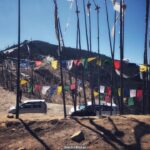
10 captivating facts about Pokhara lake in Nepal
Pokhara is a city in Nepal that lies on the edge of the Himalayas, offering stunning views of snow-capped mountains, lush green valleys, and serene lakes. Pokhara is also known as the lake city of Nepal, because it has nine beautiful lakes that are surrounded by more than 20 majestic peaks.
Table of Contents
Pokhara details
Pokhara is the second-largest city in Nepal, after Kathmandu, and the capital of Gandaki Province. It has a population of about 265,000 people and covers an area of 464.2 square kilometres. It is located at an altitude of 1,400 meters above sea level, which makes it warmer than Kathmandu. The city has a subtropical climate, with hot and humid summers and mild and pleasant winters.
Pokhara is a popular tourist destination in Nepal, as it is the gateway to the Annapurna region, where many trekkers find their Shangri-la. The Annapurna range is one of the most spectacular mountain ranges in the world, with peaks over 6,000 meters high, including Annapurna I (8,091 meters), the tenth highest mountain in the world. Pokhara offers a panoramic view of the Annapurna range, especially from Sarangkot, a hilltop village that is the best spot to watch the sunrise or the city lights.

Fame
Pokhara is also famous for its lakes, which are the main attractions for visitors who want to relax and enjoy nature. The largest and most famous lake in Pokhara is Phewa Lake (also spelled Fewa Lake), which covers an area of 4.43 square kilometers and has a depth of 24 meters. Phewa Lake is a natural freshwater lake that was formed by a landslide in the 12th century. Phewa Lake is known for its scenic beauty and its reflection of Machhapuchhre (6,993 meters), a fishtail-shaped peak that is considered sacred by the locals. Phewa Lake also has a small island that hosts the Tal Barahi Temple, a Hindu temple dedicated to the goddess Durga.
Other lakes in Pokhara include Rupa Lake and Begnas Lake, which are located about 15 kilometers from the city center. These lakes are separated by a forested hill called Panchabhaiya Danda, and offer a tranquil retreat for boating and fishing. Rupa Lake covers an area of 1.35 square kilometres and has a depth of 6 meters. Begnas Lake covers an area of 3.28 square kilometres and has a depth of 10 meters. Both lakes are part of the Ramsar site, which is a wetland of international importance for biodiversity conservation.

Adventure
Pokhara is not only a place for relaxation, but also a place for adventure. Pokhara offers various activities for thrill-seekers, such as paragliding, ultralight flights, zip-lining, bungee jumping, mountain biking, golfing, and more. Pokhara also has cultural and historical attractions, such as the World Peace Pagoda, a Buddhist stupa that stands on a hill overlooking the city and the lake; the Old Bazaar, a traditional market that dates back to the 18th century; the Bindyabasini Temple, a Hindu temple that is one of the oldest in Pokhara; and several museums that showcase the history and culture of Pokhara and Nepal.
Pokhara is a city that has something for everyone. Whether you are looking for nature, culture, or adventure, Pokhara will not disappoint you. Pokhara is a jewel in the Himalaya that you should not miss when you visit Nepal.
Here are some facts about Pokhara or Phewa Lake:
1. Size and Location: Pokhara Lake covers an area of approximately 4.43 square kilometres (1.71 square miles). It is situated at an altitude of about 827 meters (2,713 feet) above sea level.
2. Natural Beauty: The lake is renowned for its stunning natural beauty, surrounded by lush green hills and snow-capped mountains. The reflection of the Annapurna and Machhapuchhre (Fishtail) mountains can be seen on the calm waters of the lake, creating a breathtaking view.

3. Sacred Status: It is considered a sacred lake by the locals and holds religious significance. There is a temple named Tal Barahi Temple situated on an island in the middle of the lake, which adds to its cultural and spiritual significance.
4. Boating and Water Sports: The lake offers various recreational activities such as boating, kayaking, and canoeing. Visitors can hire boats from lakeside and explore the tranquil waters while enjoying the scenic beauty.
5. Fish Species: The lake is home to various species of fish, including the famous Himalayan trout, known as “Sahar.” Fishing is allowed in the lake, and anglers can try their luck to catch some fish.
6. Water Source: The lake is primarily fed by water from the glaciers of the Annapurna and Machhapuchhre mountains. The pristine water of the lake is also a source of drinking water for the residents of Pokhara.

7. Tourism Hub: Pokhara Lake is a popular tourist destination, attracting visitors from around the world. The lakeside area offers a range of accommodations, restaurants, cafes, and shops, making it a vibrant and bustling tourist hub.
8. Paragliding Spot: The lake’s proximity to Sarangkot, a popular paragliding spot, makes it a picturesque take-off point for paragliders. Tourists can experience the thrill of paragliding and enjoy breathtaking aerial views of the lake and surrounding landscapes.
9. Ecological Importance: The lake and its surrounding wetlands are an important ecosystem, providing habitat for various bird species, including migratory birds. It is recognised as a Ramsar site, signifying its international importance for biodiversity conservation.
10. Sunsets and Reflections: Pokhara Lake is famous for its stunning sunsets, as the golden hues of the setting sun reflect on its calm waters, creating a magical ambiance. It is a sought-after spot for photographers and nature enthusiasts.











